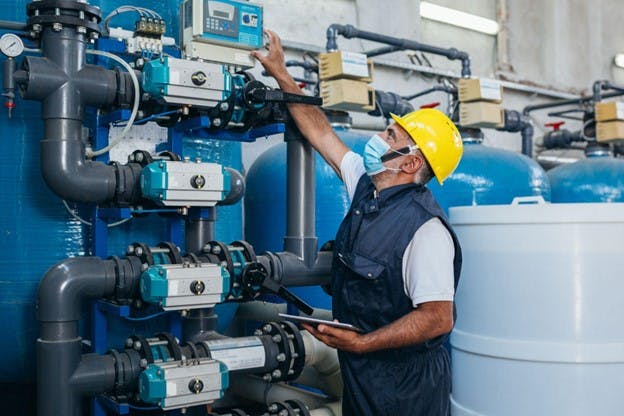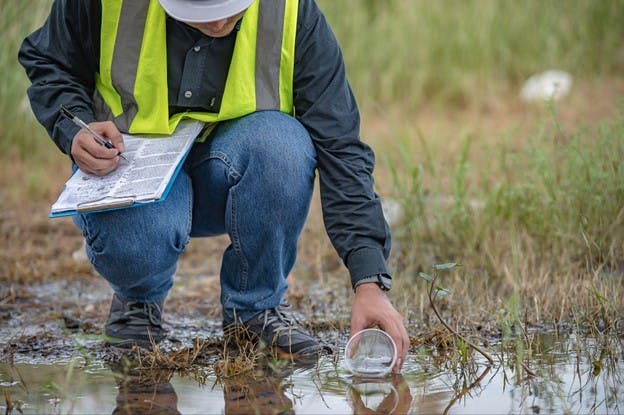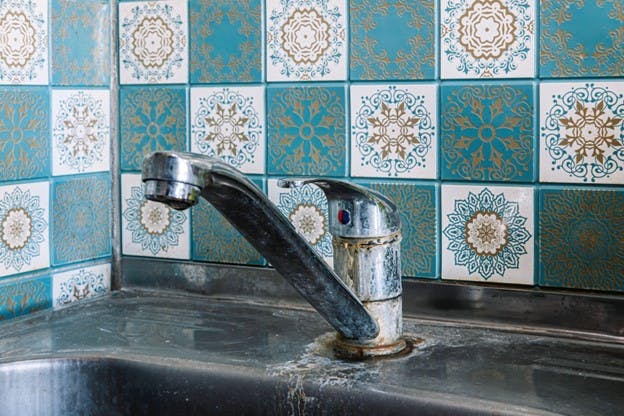August 2023
A Clear Look at Philadelphia Water Quality
Long before the Fresh Prince put the city’s school basketball courts on the map, Philly already had quite a rich history. The city of Philadelphia was the first capital of the United States, the first U.S. lager was made here, and Benjamin Franklin called the place home. It has the Liberty Bell, the Constitution, and the oldest continually occupied street in the country.
Unsurprisingly, the infrastructure in one of America’s first cities is getting old, particularly the water and sewage lines. This paired with the fact that this historic gem has the second highest population in the northeast behind New York City means these old bones still have a lot of work to do.
So, what does this mean for Philadelphia water quality? That’s exactly what we’ll share as we take a deep dive into Philly and its water systems. We’ll look at what they’re doing well, what could use some improvement, and what, if anything, you need to do to make sure you only get top-quality water in your home.
Where Does Philadelphia Get Its Drinking Water?
The Philadelphia Water Department (PWD) sources water for Philly’s 1.6 million residents from the Delaware River Watershed. This includes 58% from the Delaware River and the other 42% from the Schuylkill River. Philly doesn’t utilize any groundwater sources.
The Delaware River, which runs from New York State all the way to the mouth of the Delaware Bay, 330 miles to the south of Philly, is considered the lifeblood of the northeast by many. It is used by several states for drinking water, recreation, industry, and a place to discharge wastewater.
Once the source water is pulled from the river, they are then sent to one of three drinking water treatment plants: Samuel S. Baxter Plant on the Delaware River, Queen Lane located on the west side of the Schuylkill, and the Belmont Plant located on the east side of the Schuylkill.
The water treatment plants filter the water and put it through multiple stages of disinfection with chlorine. Once treated, up to 546 million gallons can be stored as a backup water supply in case either river is temporarily impaired.

Which Chemicals Are in Philadelphia Water?
Before water leaves the treatment plants, PWD disinfects the water with sodium hypochlorite before adding fluoride for dental health, zinc phosphate to coat and decrease corrosion of old iron and lead pipes, and ammonia to combine with chlorine and create chloramines.
Chloramines last longer than chlorine and create fewer harmful disinfection byproducts. With 3,100 miles of water mains to travel through, it’s important the chlorine doesn’t break down long before it gets to you. The downside to chloramines is that they aren’t broken down with common activated carbon filters like regular chlorine is.
You’ll need a filter that uses catalytic carbon or reverse osmosis technologies to effectively remove it. Take our Filter Quiz to be matched up with the right filter technologies for your needs.
How Is Philadelphia Water Quality?
The Philadelphia Water Department works hard to make sure Philly water is safe to drink. With the average water main age in the city sitting at almost 80 years old, the city has its work cut out for it. With a current goal of replacing 40 miles of old pipes per year, it would take another 80 years to replace them all. Unfortunately, they are missing their goals by a considerable amount. Between 2000 and 2019, they only managed to replace 17 miles per year.
Old pipes can mean leaks and breaks, low water pressure, water contamination, metal leaching from pipes, and more. It’s not just the drinking water pipes that are aging fast, it's also the treatment plants, pumping stations, and sewage lines in need of an update. The Queen Lane water treatment plant, for instance, was built in 1911.
While there is more funding on the way to help speed things up, there are other problems too.
The Delaware River, where most of Philly’s drinking water comes from, acts as drainage for 11,440 square miles of land around New York, New Jersey, Pennsylvania, and Delaware. This makes the river water susceptible to pollution and runoff from streets, stormwater, and agriculture over a large area.
While much of the river’s edge remains undeveloped, there’s a lot of industrial area around the river. Chemical spills, sewage, and intentional dumping have been occurring in the river for centuries. And although it's much better than it once was, there is still work to be done. Many companies are still dumping wastewater into the river and the river is currently the largest source of plastic pollution in North America.
Is the Water Safe to Drink in Philadelphia?
Generally, tap water in Philadelphia is considered safe to drink by EPA standards. In 1974, the U.S passed the Safe Drinking Water Act which implemented uniform water standards amongst all public and city water suppliers. To do this, the U.S. Environmental Protection Agency sets limits on and monitors 90 different chemical contaminants.
Philadelphia water quality is held to these standards. The PWD must treat and filter all drinking water to stay under the EPA’s limits. They also have to provide annual test results to the public in the form of a Consumer Confidence Report or a Drinking Water Quality Report. While PWD successfully keeps regulated contaminants within legal limits, that doesn't always mean the water is safe.
There are thousands of unregulated contaminants in the world compared to only 90 the EPA sets limits on. Many of these, like polyfluoroalkyl substances (PFAS), we are just learning are widespread problems with serious health concerns. Other contaminants like microplastics we know are contaminating our water, but we don’t have the technology to test for it cost effectively. It is currently unregulated.
Many in the scientific community agree that the limits the EPA does have on many water contaminants are far too high for public health. The Environmental Working Group (EWG), a D.C.-based water watchdog, points out that even though modern science has learned so much about the dangers of various contaminants over the last 20 years, the EPA hasn’t updated a single enforceable limit in that time.
What Contaminants Are Hurting Philadelphia Water Quality?
There are many contaminants in Philadelphia water today that the EWG flags as far too high. Let’s take a look at some of them.
Haloacetic Acids (HAA5)
HAA5 is made up of five haloacetic acids: monochloroacetic acid, dichloroacetic acid, trichloroacetic acid, monobromoacetic acid, and dibromoacetic acid. These chemicals are known as disinfectant byproducts, as they result from disinfectants like chlorine interacting with organic matter in water. Long-term exposure to HAA5 can lead to cancer.
Levels of HAA5 in Philadelphia water have exceeded what the EWG recommends for safety by 322 times:
- EPA maximum allowance: 60 parts per billion (ppb)
- EWG recommended maximum: 0.1 ppb
- Philadelphia maximum contaminant level: 32.2 ppb
Haloacetic Acids (HAA9)
HAA9 includes all of the contaminants from HAA5 but adds bromochloroacetic acid, bromodichloroacetic acid, chlorodibromoacetic acid, and tribromoacetic acid. These are also disinfectant byproducts and are also cancer-causing.
Levels of HAA9 in Philadelphia water have exceeded what the EWG recommends for safety by 615 times:
- EPA maximum allowance: No legal limit
- EWG recommended maximum: 0.06 ppb
- Philadelphia maximum contaminant level: 36.9 ppb
Total Trihalomethanes (TTHMs)
TTHMs — like the haloacetic acids above — are formed when chlorine interacts with organic compounds in drinking water. They’re also known to be carcinogenic. This category is made up of four chemicals: chloroform, bromodichloromethane, dibromochloromethane, and bromoform.
Levels of TTHMs in Philadelphia water have exceeded what the EWG recommends for safety by 280 times:
- EPA maximum allowance: 80 ppb
- EWG recommended maximum: 0.15 ppb
- Philadelphia maximum contaminant level: 42 ppb
Chromium (Hexavalent)
Chromium is another common contaminant found in U.S. water supplies. It can occur naturally but is also an industrial pollutant. Although it’s known to be a carcinogen, this contaminant is still unregulated by the EPA.
Chromium levels in Philadelphia water have exceeded what the EWG recommends for safety by 2.3 times:
- EPA maximum allowance: No legal limit
- EWG recommended maximum: 0.02 ppb
- Philadelphia maximum detected level: 0.0456 ppb
Nitrates
Nitrates usually end up in water supplies through stormwater runoff from fertilizers, but they can also come from septic tanks. They can cause oxygen deprivation in infants and increase the risk of certain cancers.
Nitrate levels in Philadelphia water have exceeded what the EWG recommends for safety by 17 times:
- EPA maximum allowance: 10 parts per million (ppm)
- EWG recommended maximum: 0.14 ppm
- Philadelphia maximum detected level: 2.38 ppm
Does Philadelphia Have Hard Water?
Philadelphia is considered to have moderately hard to hard water depending on which treatment plant you get your water from. Hard water means the water contains a high amount of hard water minerals like calcium and magnesium.
Water is a universal solvent that wears down rocks and soil as it passes over them. The particles get picked up by the water and taken with it. These tiny mineral and rock particles are safe for consumption, but they wreak havoc on your pipes, appliances, and surfaces. Hard water leaves stains and limescale on your surfaces, builds up gunk on your pipes, and gives bacteria and mold places to attach to and thrive.
If you’re dealing with Philadelphia’s hard water, you’ll be surprised how much frustration you’ll eliminate by adding a traditional water softener or a salt-free water conditioner to your water filtration system.
Does Philadelphia Water Have Lead in It?
Philadelphia water does not have lead in it, but your plumbing might. Many homes built before 1986 might still have lead pipes that leach into your drinking water.
Lead is considered a neurotoxin and there is no safe level of lead exposure, according to the CDC. It is especially dangerous to children and pregnant women. While Philadelphia does add chemicals to the water to coat your pipes and prevent leaching, this isn’t foolproof, and some lead might still end up in your water.
If you have lead in your plumbing, consider adding an under counter water filter to your kitchen sink. An under counter filter cleans your water after it touches your pipes. A whole home filter, on the other hand, filters your water before it enters your home’s plumbing. If the lead is in your plumbing, the water that comes out of your tap could still be contaminated.
Is Philadelphia Water Fluoridated?
Philadelphia does add fluoride to their water as a public health initiative. Fluoride protects teeth from cavities. If you'd rather control your fluoride use instead of ingesting it in your water, you can filter it out using a reverse osmosis water filtration system.
Get the Best-Tasting Water While Living in Philadelphia
Philadelphia’s history is well known and admired. Everywhere you go there’s a reminder of the city’s long and storied past. While the streets and old buildings might be charming, the old pipes delivering your drinking water may have less appeal.
If you have concerns about Philadelphia water quality or just want the best tasting water right from your tap, HomeWater can help.
Our UPSTREAM 4-Stage Whole Home Water Filter will deliver refreshingly clean water to every faucet in your home. It will remove pollutants like dirt, rust, chlorine, DPBs, heavy metals, PFAS, microorganisms, and more. Add a water softener to get rid of that hard water for good.
With our HomeWater 4-Stage Reverse Osmosis Under Counter Water Filter, you’ll never feel the need to buy bottled water ever again. Reduce lead, fluoride, microplastics, chloramines, and disinfection byproducts for the best-tasting, high-quality water you can get in Philadelphia.
You’ll be able to taste the difference with HomeWater filters.


